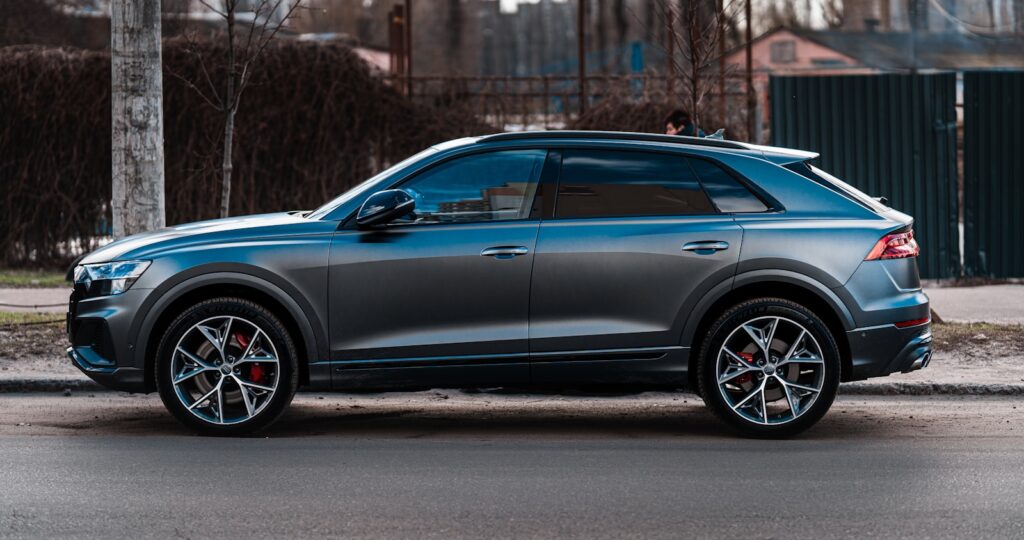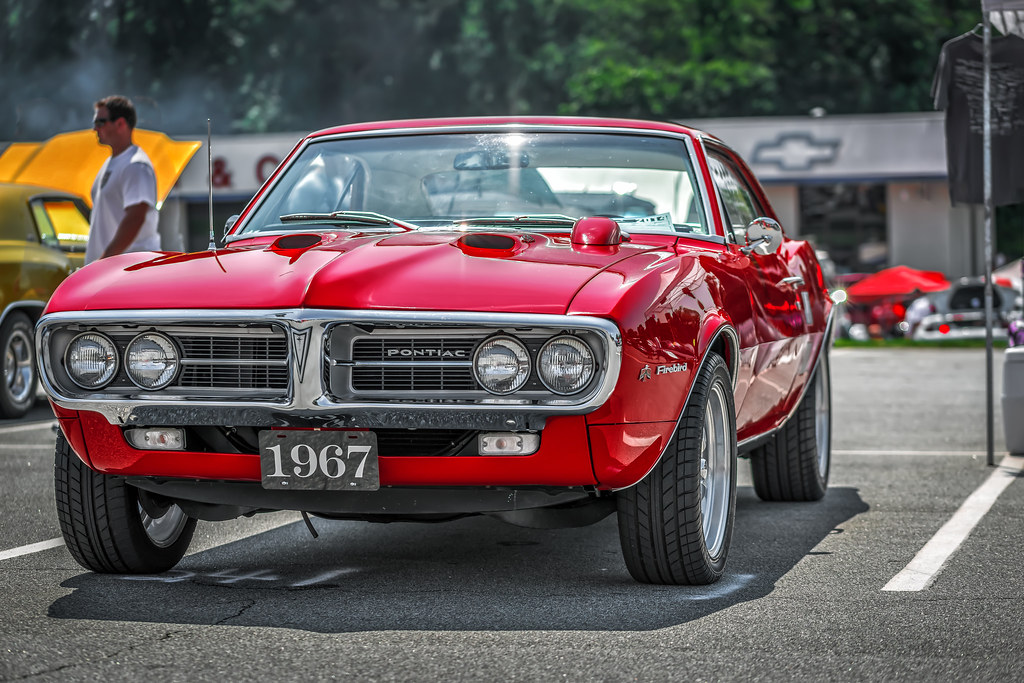
Let’s face it. Sometimes, our cars let us down. The process of acquiring a new vehicle is often an exciting journey, filled with anticipation and the promise of new adventures. Yet, this high expectation can sometimes lead to an equally profound sense of disappointment, a phenomenon known as buyer’s remorse, which, when it involves a major investment like a car, can be particularly painful.
Vehicle manufacturers roll out cars that look promising but often don’t live up to the hype. It can truly sting after spending tens of thousands of dollars or entering a multi-year car loan only to develop a strong case of buyer’s remorse. Considering how much new and used cars go for these days, it’s absolutely essential for consumers to know precisely what they’re getting into. Making a buying decision based solely on exterior aesthetics and initial specifications, without delving deeper into ownership experiences, might very well lead to significant trouble down the road.
Indeed, the prevalence of this regret is striking. According to a LendingTree survey, nearly 4 in 10 (39%) Americans who have bought a car express regrets about their purchase. The most common regret, reported by 14% overall, is wishing they had purchased a different make or model, underscoring the critical importance of thoroughly researching a vehicle beyond its initial appeal. Learning from other vehicle owners’ mistakes is one of the most effective ways to make better choices, helping to avoid the common pitfalls that have left many feeling stuck with a decision they wish they could reverse. We now delve into a selection of vehicles that owners frequently report regretting, offering practical insights into why these models have fallen short of expectations.
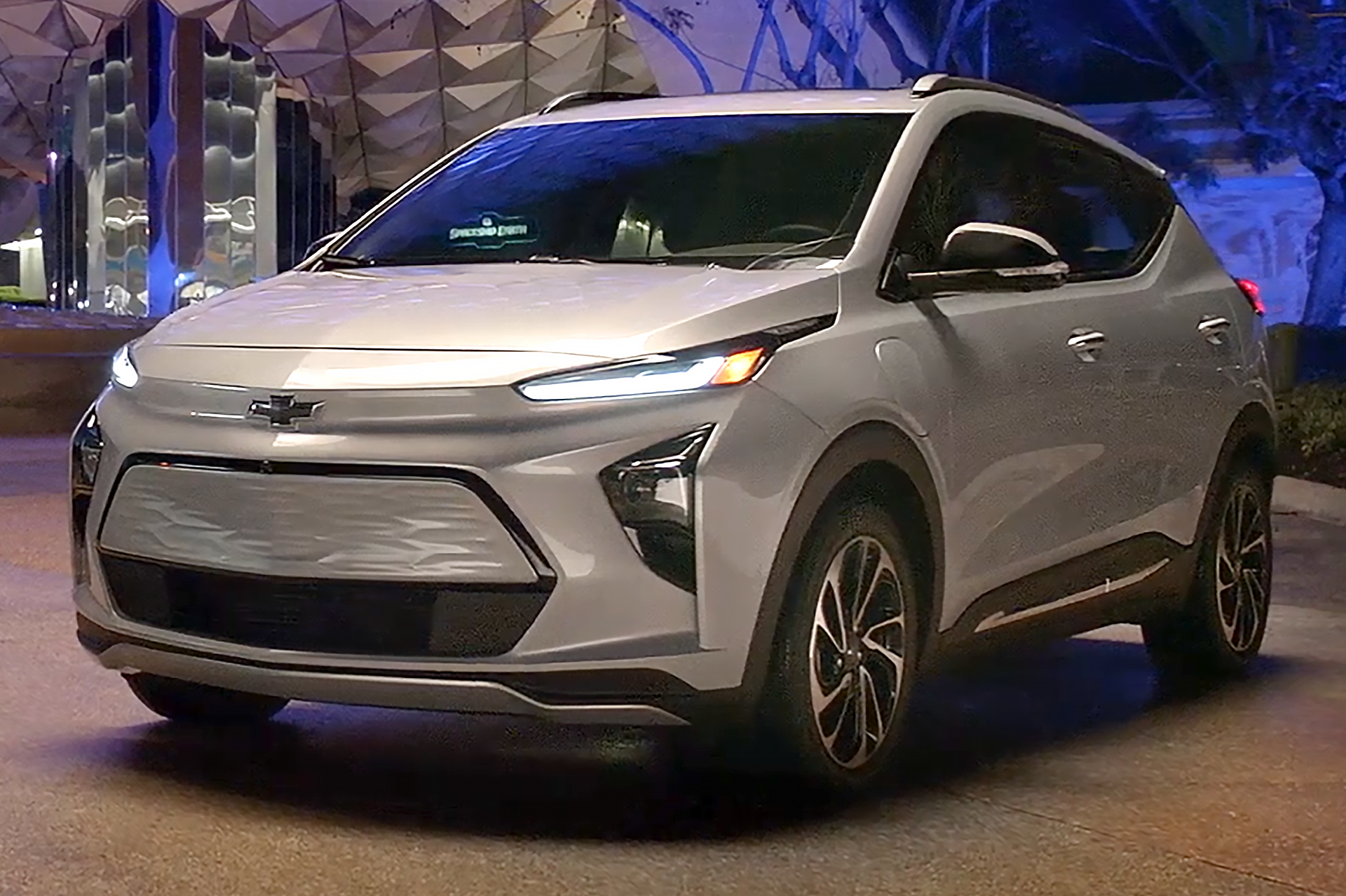
1. **Chevrolet Bolt**The Chevrolet Bolt, initially introduced by General Motors, garnered considerable praise for its affordability and a respectable electric range, positioning it as an accessible option in the burgeoning EV market. However, despite these attractive qualities, the vehicle has unfortunately been plagued with a series of significant problems that have severely impacted owner satisfaction and long-term reliability. What began as a promising entry into electric mobility quickly became a source of major concern for many of its drivers.
The most infamous and concerning issue associated with the Bolt has been its battery-related fires, a critical flaw that led to extensive and costly recalls in both 2020 and 2021. This severe safety hazard stemmed from lithium-ion batteries, manufactured by LG, which were found to be susceptible to short-circuiting, overheating, and, in severe cases, igniting into flames. Such a fundamental safety defect not only endangers vehicle occupants but also severely erodes consumer trust in the vehicle’s design and engineering integrity.
Beyond the grave battery problems, the Chevrolet Bolt also drew criticism for several other aspects of its ownership experience. Owners frequently reported that the ride quality was merely “so-so,” lacking the refinement and comfort expected even in a compact electric vehicle. Similarly, the space available for rear passengers was often deemed inadequate, limiting the car’s practicality for families or those needing to transport multiple adults. Furthermore, the handling characteristics were described as uninspiring, failing to deliver an engaging or particularly responsive driving experience, adding to the overall sense of buyer’s remorse for those who had hoped for more.
Car Model Information: 2023 Chevrolet Bolt EUV FWD Premier
Name: Chevrolet Bolt EV
Caption: 2022 Chevrolet Bolt EV
Manufacturer: General Motors
Production: unbulleted list
ModelYears: unbulleted list
Class: Subcompact car
BodyStyle: hatchback
Layout: Front-engine, front-wheel-drive layout
Predecessor: Chevrolet Spark EV
Categories: 2020s cars, All Wikipedia articles in need of updating, All articles containing potentially dated statements, All articles with unsourced statements, Articles containing potentially dated statements from February 2018
Summary: The Chevrolet Bolt EV (marketed in Europe as Opel Ampera-e) is a battery electric subcompact hatchback manufactured and marketed by General Motors under its Chevrolet brand from late 2016 until late 2023, with a brief hiatus between mid-2021 and early 2022.
The first-generation Bolt was developed and manufactured with LG Corporation. Sales of the 2017 Bolt began in California in December 2016; it was released nationwide and international markets release in 2017. A rebadged European variant was marketed as the Opel Ampera-e in mainland Europe. In 2017, the Bolt was the second-best-selling plug-in car in the United States. It was named the 2017 Motor Trend Car of the Year, the 2017 North American Car of the Year, an Automobile magazine 2017 All Star, and was listed in Time magazine’s Best 25 Inventions of 2016. The Ampera-e was discontinued after 2018. By the end of 2020, GM had sold 112,000 Bolt and Ampera-e cars worldwide. The first-generation Bolt had been subject to at least three recalls due to battery fire risks.
In mid-2023, GM officials said they would discontinue the Bolt; after outcry, they announced plans for a next-generation model, which is expected to be revealed in 2025 for model year 2026.
Get more information about: Chevrolet Bolt
Buying a high-performing used car >>>
Brand: Chevrolet Model: Bolt
Price: $23,999 Mileage: 28,546 mi.
Read more about: 12 Cars That Made Drivers Say ‘Nope, Not Again!’ – Your Ultimate Guide to Avoiding Instant Regret on Wheels
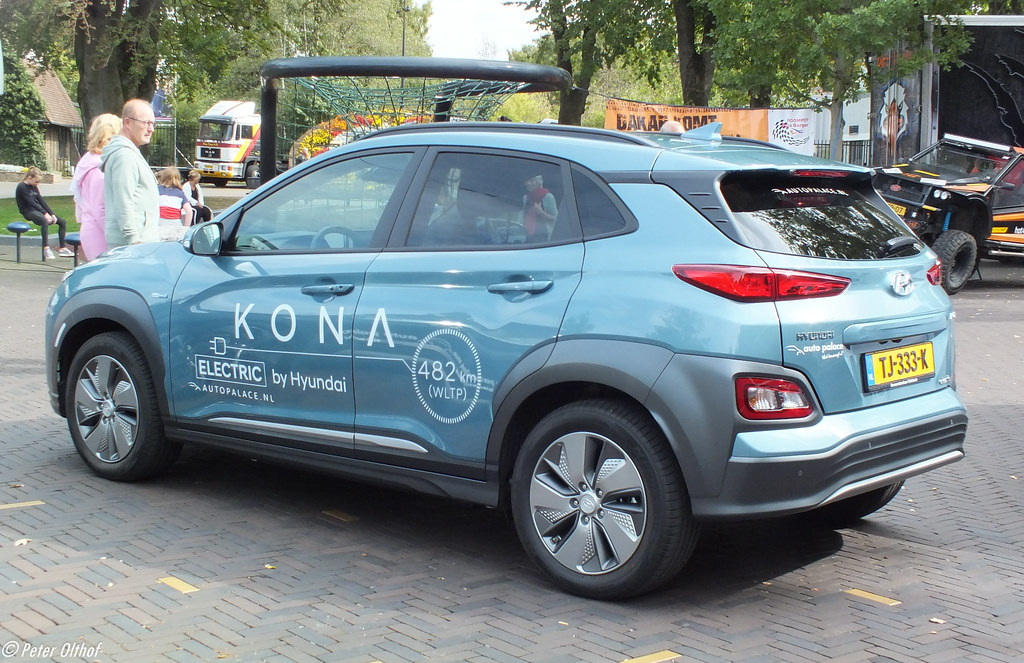
2. **Hyundai Kona Electric**Hyundai has, in recent years, established a strong reputation for producing a range of interesting and well-received electric vehicles, pushing the boundaries of design and efficiency. However, even successful manufacturers can have missteps, and the Hyundai Kona Electric stands as a notable “clunker” in the brand’s otherwise impressive EV lineup. Despite its modern styling and initial appeal, the vehicle quickly developed a history marred by significant reliability issues.
Unfortunately, battery fires and subsequent recalls are a prominent part of the Kona Electric’s history, mirroring the serious challenges faced by other early EV models. Hyundai was compelled to issue a worldwide recall in both 2020 and 2021, undertaking the critical task of replacing battery packs in affected electric vehicles to mitigate the substantial fire risks. These extensive corrective actions highlight a severe manufacturing or design flaw that posed a direct threat to safety and ownership confidence.
Regrettably, the battery issues were, for many owners, merely “the tip of the iceberg.” The phrase “Buyer beware!” associated with the Kona Electric underscores a broader pattern of dissatisfaction that extended beyond just the critical battery concerns. While the specific additional problems are not detailed in the context, the implication is that owners encountered a range of other challenges that collectively detracted from the vehicle’s overall value and reliability, leading many to regret their purchase and the unforeseen troubles that came with it.
Car Model Information: 2019 Cadillac Escalade Platinum
Name: Hyundai Kona
Caption: Hyundai Kona N Line (SX2)
Manufacturer: Hyundai Motor Company
Aka: Hyundai Kauai (Portugal)
Production: 2017–present
ModelYears: 2018–present
Class: Subcompact crossover SUV
BodyStyle: SUV
Layout: ubl
Categories: 2020s cars, All-wheel-drive vehicles, All Wikipedia articles in need of updating, Articles containing Chinese-language text, Articles containing Korean-language text
Summary: The Hyundai Kona (Korean: 현대 코나) is a subcompact crossover SUV produced by the South Korean manufacturer Hyundai. The first-generation Kona debuted in June 2017 and the production version was revealed later that year. It is positioned between the Venue or Bayon and the Tucson in Hyundai crossover SUV line-up. The battery electric version called the Kona Electric (or Kona EV) was first launched in South Korea during the first half of 2018 and rolled out gradually worldwide afterwards.
Get more information about: Hyundai Kona
Buying a high-performing used car >>>
Brand: Hyundai Model: Kona Electric
Price: $37,811 Mileage: 84,091 mi.
Read more about: 12 Cars That Made Drivers Say ‘Nope, Not Again!’ – Your Ultimate Guide to Avoiding Instant Regret on Wheels
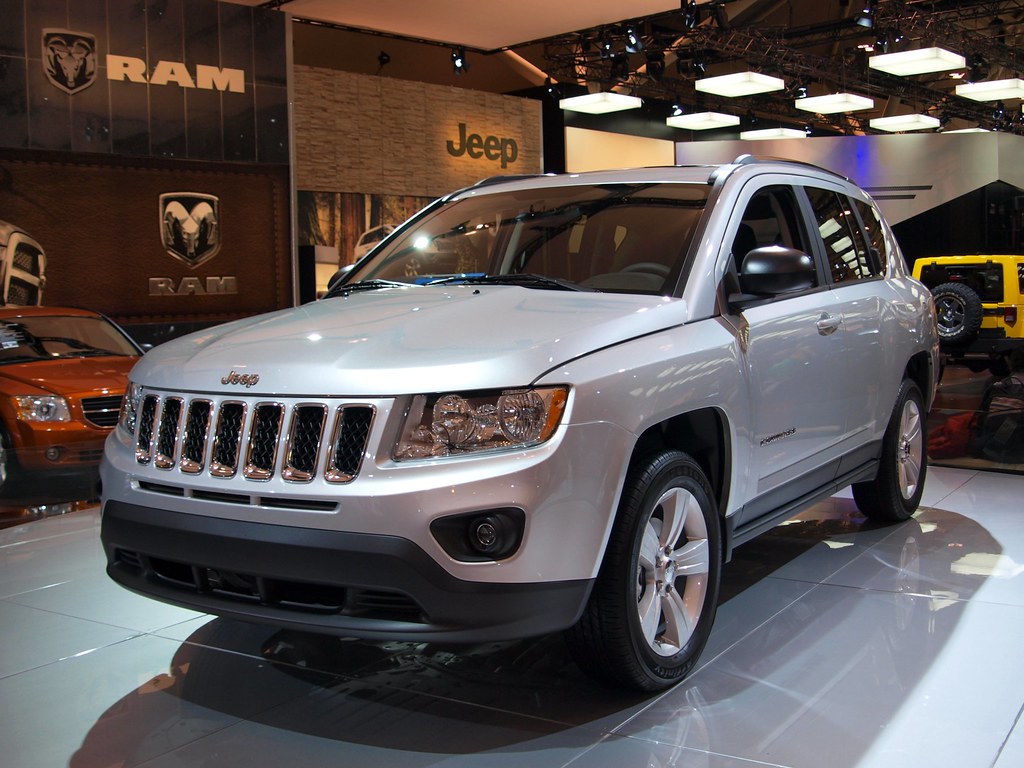
3. **Jeep Compass**The Jeep Compass, marketed as a compact SUV, has unfortunately proven to be a source of considerable frustration for many owners across various model years. Far from being a reliable and straightforward vehicle, it has gained a reputation for having some “serious issues” that can quickly turn the ownership experience into a headache. The advice to “steer clear of this SUV” if you want to avoid a “migraine headache on wheels” is a stark warning reflecting widespread dissatisfaction among its drivers.
One of the most frequently reported complaints from owners revolves around the continuously variable transmission (CVT) and the 9-speed automatic transmissions fitted in the Jeep Compass. These crucial components have been known to experience herky-jerky shifting, leading to an uncomfortable and unreliable driving experience. Even more concerning, these transmissions are prone to catastrophic failure, requiring expensive and often premature replacements that significantly add to the cost of ownership and severely diminish the vehicle’s perceived value.
In addition to the pervasive transmission problems, owners of the Jeep Compass have also cited a range of other performance and reliability issues. These include poor engine performance, which can manifest as a lack of power or responsiveness, making daily driving a chore. Excessive oil consumption is another common and frustrating complaint, indicating potential engine problems that can lead to increased maintenance costs and concerns about the engine’s longevity. Furthermore, various electrical system issues have been reported, contributing to a broader perception of unreliability and frequently requiring inconvenient and costly repairs.
Car Model Information: 2019 Jeep Wrangler Sport S
Name: Jeep Compass
Caption: 2019 Jeep Compass
Manufacturer: Jeep
Production: 2006–present
ModelYears: 2007–present
Class: Compact crossover SUV
BodyStyle: SUV
Layout: Front-engine, front-wheel-drive layout
Chassis: Unibody
Categories: 2010s cars, 2020s cars, All-wheel-drive vehicles, All Wikipedia articles written in American English, Articles with short description
Summary: The Jeep Compass is a compact crossover SUV, introduced in 2006 for the 2007 model year. The first generation Compass and Patriot, its rebadged variant, were among Jeep’s first crossover SUVs. The second-generation Compass debuted in September 2016 in Brazil and at the Los Angeles International Auto Show in November 2016, sharing a modified platform with the Renegade. It is positioned between the smaller Renegade and the larger Cherokee globally or the Commander in South America. The third-generation Compass debuted in May 2025, built on the STLA Medium by Stellantis, shared with other PSA Groupe vehicles.
Get more information about: Jeep Compass
Buying a high-performing used car >>>
Brand: Jeep Model: Compass
Price: $24,082 Mileage: 52,780 mi.
Read more about: 12 Cars That Made Drivers Say ‘Nope, Not Again!’ – Your Ultimate Guide to Avoiding Instant Regret on Wheels
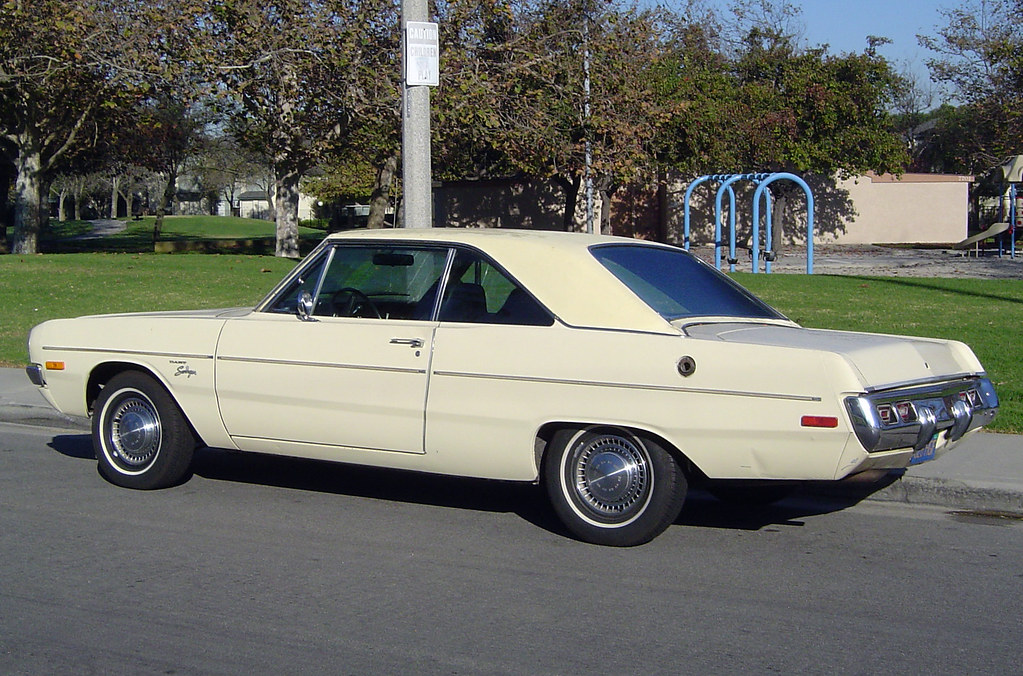
4. **Dodge Dart**The Dodge Dart, a compact sedan, initially aimed to offer a practical and stylish option in its segment. However, for many owners, this ambition quickly dissolved as the vehicle revealed itself to be plagued with what are described as “full-size car problems.” This stark contrast between its compact classification and the magnitude of its issues made it a prominent example of a vehicle many buyers ultimately wished they had never purchased.
The litany of complaints for the Dodge Dart spans virtually every major system within the car. From the transmission to the engine, and from the suspension to the brakes, owners reported widespread issues that compromised both the reliability and the driving experience. This comprehensive failure across critical components suggests a fundamental lack of quality control or design flaws that permeated the vehicle’s manufacturing, creating a consistent source of frustration for its drivers.
Perhaps the most telling indicator of widespread dissatisfaction is the statistic provided by Consumer Reports, which notes that around six in 10 buyers expressed that they were “not satisfied” with the vehicle. Such a high percentage of unhappy owners paints a clear picture of a car that consistently failed to meet expectations, leading to significant buyer’s remorse. The cumulative effect of these problems made the Dodge Dart a vehicle that many owners would readily “unprocure” if given the chance to reverse their purchasing decision.
Car Model Information: 1972 Dodge Dart Swinger
Name: Dodge Dart
Caption: 1966 Dodge Dart GT 2-door hardtop
Manufacturer: Dodge
Production: 1959–1976 (US market)
ModelYears: 1960–1976 (US market)
Class: Full-size
Layout: FR layout
Predecessor: Dodge Coronet#Fourth generation (1957–1959)
Related: Plymouth Valiant,Chrysler Valiant,Dodge Phoenix
Successor: Dodge Aspen,Dodge Diplomat,Talbot Tagora
Categories: 1970s cars, All articles with unsourced statements, Articles with short description, Articles with unsourced statements from December 2023, Articles with unsourced statements from May 2025
Summary: The Dodge Dart is a line of passenger cars produced by Dodge from the 1959 to 1976 model years in North America, with production extended to later years in various other markets.
The production Dodge Dart was introduced as a lower-priced full-size model in 1960 and 1961, but became a mid-size car for one model year for 1962, and was then reduced to a compact for two generations, from 1963 to 1976.
Chrysler had first used ‘Dart’ name plates on two Italian styled show cars, in 1956 and 1957, before it became a Dodge model name. The Dart nameplate was resurrected for a Fiat-derived compact car that was introduced in 2012.
Get more information about: Dodge Dart
Buying a high-performing used car >>>
Brand: Dodge Model: Dart
Price: $18,250 Mileage: 40,424 mi.
Read more about: 12 Cars That Made Drivers Say ‘Nope, Not Again!’ – Your Ultimate Guide to Avoiding Instant Regret on Wheels

5. **Dodge Grand Caravan**The Dodge Grand Caravan holds a unique place in the automotive landscape, having served as a family hauler for generations, creating a wide array of memories—some undoubtedly fond, but many, for current owners, decidedly not. Despite its long tenure and utilitarian purpose, the minivan is frequently described as “anything but smooth driving,” pointing to underlying issues that severely detract from its primary function as a reliable and comfortable family vehicle.
One of the most frequent and significant complaints from owners of the Dodge Grand Caravan centers on transmission failure, a critical issue for a vehicle designed to carry heavy loads and transport families. This can render the minivan unreliable for its intended purpose, causing immense stress and financial burden. Before these transmissions ultimately go “kaput,” owners often experience a range of warning signs, including delayed gear engagement, rough shifting, and slipping gears, which compromise safety and driving quality.
Furthermore, the problems with the Dodge Grand Caravan extend beyond just its powertrain. Many owners also report persistent electrical system problems, which can lead to a host of unpredictable issues from malfunctioning accessories to more critical operational faults. Heavy oil consumption is another common complaint, indicating potential engine wear or design flaws that necessitate frequent top-ups and raise concerns about the engine’s long-term health. If they could turn back time and have a do-over, many owners would undoubtedly choose something else, highlighting the profound regret associated with this particular minivan.
Car Model Information: 2023 Buick Envision Preferred
Caption: 2011 Dodge Grand Caravan Mainstreet
Name: Dodge Grand Caravan
Manufacturer: Chrysler Corporation,Daimler AG,Chrysler LLC,Chrysler Group LLC,FCA US LLC
Class: Minivan
Layout: FF layout,F4 layout
Production: November 2, 1983 –August 21, 2020
ModelYears: 1984–2020
Related: Plymouth Voyager,Chrysler Town & Country (minivan),Dodge Mini Ram,Chrysler Voyager,Volkswagen Routan
Assembly: Windsor, Ontario,Fenton, Missouri,Fenton, Missouri,Fuzhou
Successor: Dodge Journey,Chrysler Voyager
Categories: All-wheel-drive vehicles, All articles with unsourced statements, Articles with short description, Articles with unsourced statements from December 2017, Articles with unsourced statements from May 2009
Summary: The Dodge Caravan is a series of minivans manufactured by Chrysler from the 1984 through 2020 model years. The Dodge version of the Chrysler minivans, was marketed as both a passenger van and a cargo van (the only version of the model line offered in the latter configuration). For 1987, the model line was joined by the long-wheelbase Dodge Grand Caravan. Produced in five generations across 36 model years, the Dodge Caravan is the second longest-lived Dodge nameplate (exceeded only by the Dodge Charger). Initially marketed as the Dodge counterpart of the Plymouth Voyager, the Caravan was later slotted between the Voyager and the Chrysler Town & Country. Following the demise of Plymouth, the model line became the lowest-price Chrysler minivan, ultimately slotted below the Chrysler Pacifica.
Sold primarily in the United States and Canada, the Dodge Caravan was also marketed in Europe and other international markets under the Chrysler brand (as the Chrysler Voyager or Chrysler Caravan). From 2008 onward, Dodge marketed the model line only as the Grand Caravan; Ram Trucks sold a cargo-only version of the model line as the Ram C/V Tradesman. The model line was also rebranded as the Volkswagen Routan from 2009 through 2014.
After the 2020 model year, the Dodge Grand Caravan was discontinued, ending production on August 21, 2020. For 2021 production, the Grand Caravan nameplate was moved to Chrysler, which used it for a Canadian-market version of the Chrysler Pacifica (in the United States, the exact vehicle was marketed as the Chrysler Voyager).
For its entire production run, the Dodge Caravan/Grand Caravan was manufactured by Chrysler Canada (now Stellantis Canada) at its Windsor Assembly facility (Windsor, Ontario). From 1987 until 2007, the model line was also manufactured by Chrysler at its Saint Louis Assembly facility (Fenton, Missouri). Since their introduction in late 1983, over 14.6 million Chrysler minivans have been sold worldwide (including export versions and versions sold through rebranding).
Get more information about: Dodge Caravan
Buying a high-performing used car >>>
Brand: Dodge Model: Grand Caravan
Price: $20,221 Mileage: 46,554 mi.
Read more about: 12 Cars That Made Drivers Say ‘Nope, Not Again!’ – Your Ultimate Guide to Avoiding Instant Regret on Wheels

6. **Nissan Sentra**While it is true that most vehicle models have their share of good and bad production years, the Nissan Sentra has several model years that are explicitly categorized as “horrific,” leading many automotive experts to strongly advise consumers to “stay away from the ones made from 2013 to 2019.” This specific period marks a significant downturn in the Sentra’s reliability and ownership satisfaction, making it a prominent entry on lists of regretted purchases.
The primary culprit behind the Nissan Sentra’s poor reputation during these years is its infamous continuously variable transmission (CVT), which has proven to be a persistent “thorn in the side” of countless owners. The CVT problems manifest in various frustrating ways, including overheating, which can lead to reduced performance and potential damage, as well as jerky acceleration and shuddering. These issues significantly detract from the driving experience, making the car feel unrefined and unreliable.
In addition to the pervasive CVT issues, the Nissan Sentra has also faced a laundry list of other mechanical and safety concerns. Engine stalling, a dangerous and unpredictable problem, has been reported among its many issues, posing a significant safety risk. Furthermore, the vehicle has been subject to numerous recalls related to critical safety components such as airbags, seatbelts, and brakes, indicating a broader pattern of quality control concerns that undoubtedly contributed to widespread buyer’s remorse for those who invested in these problematic model years.
Car Model Information: 2018 Nissan Sentra SV
Name: Nissan Sentra
Caption: 2021 Nissan Sentra SR (B18; Canada)
Manufacturer: Nissan
Aka: Nissan Sunny
Production: 1982–present
Class: Subcompact car
Predecessor: Nissan Sunny#B310
Categories: 1990s cars, 2000s cars, 2010s cars, 2020s cars, All Wikipedia articles written in American English
Summary: The Nissan Sentra is a series of automobiles manufactured by the Japanese automaker Nissan since 1982. Since 1999, the Sentra has been categorized as a compact car, while previously it occupied the subcompact class. Until 2006, Sentra was a rebadged export version of the Japanese Nissan Sunny, but since the 2013 model year, Sentra is a rebadged export version of the Sylphy. The Sentra nameplate is not used in Japan. Many other countries in Latin America sell their versions of the Sunny as the Sentra. In Mexico, the first three generations of the Sentra were known as the Nissan Tsuru (Japanese for crane), and the B13 model was sold under that name until 2017, alongside the updated models badged as Sentra.
In North America, the Sentra currently serves as Nissan’s compact car, despite being rated as a mid-size car by the EPA due to its interior volume since the 2007 model year. While previous Sentras were subcompacts, the Sentra has grown over the years, with the Nissan Versa having replaced the Sentra in the entry-level area.
The Sentra name was created for Nissan by Ira Bachrach of NameLab, and Bachrach describes the origin as “Nissan wanted consumers to understand that it was quite safe even though it was small. The word Sentra sounds like central as well as sentry, which evokes images of safety.”
Get more information about: Nissan Sentra
Buying a high-performing used car >>>
Brand: Nissan Model: Sentra
Price: $9,987 Mileage: 73,999 mi.
Read more about: 12 Cars That Made Drivers Say ‘Nope, Not Again!’ – Your Ultimate Guide to Avoiding Instant Regret on Wheels
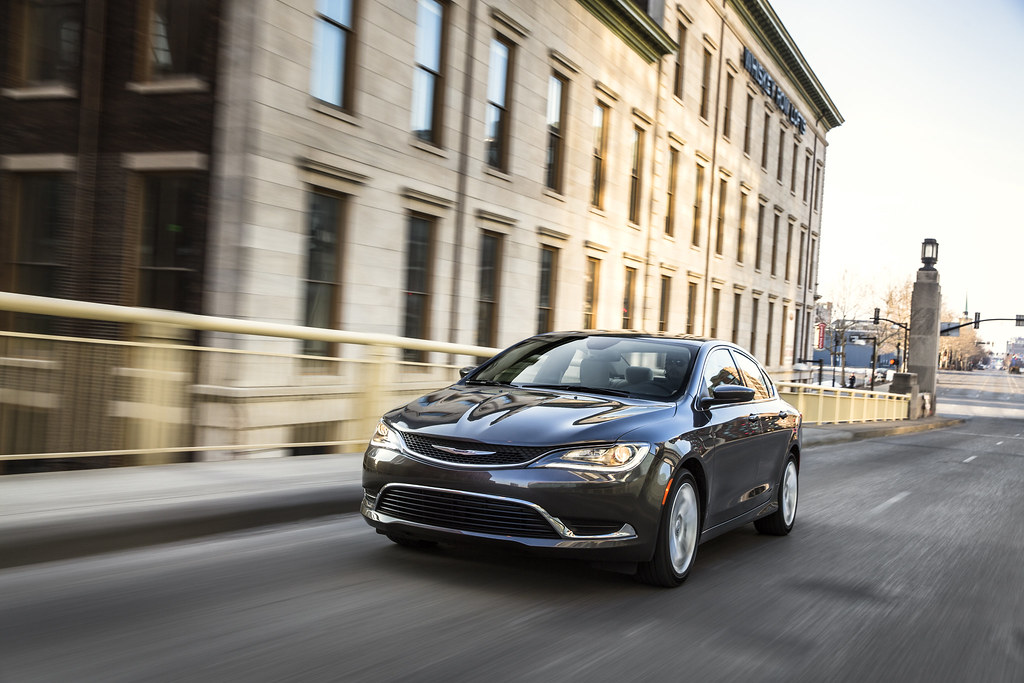
7. **Chrysler 200**The Chrysler 200, manufactured between 2011 and 2017, was positioned as a mid-size sedan offering a blend of style and practicality. However, its tenure in the market was unfortunately marked by “many reliability issues” that consistently plagued owners and tarnished its reputation. For those who purchased this vehicle, the experience often fell short of expectations, leading to significant frustration and regret.
Among the various reliability concerns, owners of the 2015, 2016, and 2017 models found the 9-speed automatic transmission to be “especially problematic.” This transmission, a critical component for driving performance and efficiency, frequently exhibited issues that compromised the vehicle’s smoothness and dependability. The fact that transmission failure was explicitly described as “a thing” for these models indicates a systemic and widespread flaw, leading to expensive repairs and considerable downtime for owners.
Beyond the notable transmission woes, the Chrysler 200 also suffered from recurring engine performance problems. These issues could range from a lack of power and responsiveness to more severe malfunctions, affecting the vehicle’s overall driveability and long-term durability. Collectively, the combination of transmission and engine troubles meant that the Chrysler 200 often failed to deliver the dependable transportation that buyers expect, making it a frequent subject of buyer’s remorse and a prime example of a vehicle owners wished they had skipped.
Following our exploration of vehicles plagued by early reliability setbacks, we now turn our attention to the next set of cars and trucks where ownership disappointments stem from a mix of persistent powertrain issues, subpar quality, and unforeseen costs. These are the vehicles that, despite initial appeal, often lead to enduring regret as owners contend with problems that chip away at their satisfaction and financial peace of mind. Learning from these experiences is invaluable for any prospective car buyer aiming to make a truly informed decision.
Car Model Information: 2015 Chrysler 200 S
Name: Chrysler 200
Manufacturer: Chrysler
Production: 2010–2016
ModelYears: 2011–2017
Assembly: Sterling Heights, Michigan
Class: Mid-size car
Sp: us
Predecessor: Chrysler Sebring
Categories: 2010s cars, All articles with dead external links, All articles with unsourced statements, Articles with dead external links from July 2020, Articles with permanently dead external links
Summary: The Chrysler 200 is a mid-size sedan that was manufactured and marketed by Chrysler from model years 2011 to 2017 across two generations in four-door sedan and two-door convertible (first generation only) body styles.
The 200 nameplate debuted on the 200C, a prototype hybrid vehicle shown at the 2009 North American International Auto Show in Detroit and based on the Chrysler 300. The 200C concept was engineered to accept either traditional gasoline, hybrid or full-electric powertrains.
Get more information about: Chrysler 200
Buying a high-performing used car >>>
Brand: Chrysler Model: 200
Price: $7,200 Mileage: 122,275 mi.
Read more about: 12 Cars That Made Drivers Say ‘Nope, Not Again!’ – Your Ultimate Guide to Avoiding Instant Regret on Wheels
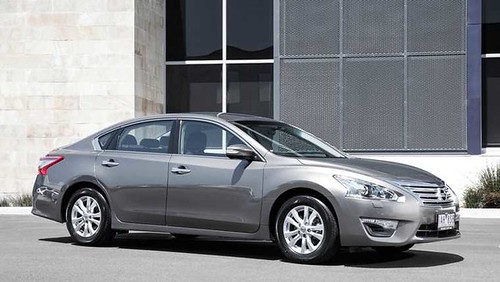
8. **Nissan Altima**Another car that frequently appears on lists of regrettable purchases is the Nissan Altima, particularly models from 2013 to 2019. This mid-size sedan, often chosen for its practicality and fuel efficiency, consistently disappoints owners due to significant and recurring mechanical problems, primarily centered around its continuously variable transmission (CVT).
The Altima’s CVT is a major point of contention, characterized by issues that manifest as jerky acceleration, shuddering, and a general lack of refinement. These transmission woes not only degrade the driving experience but also contribute to long-term reliability concerns, with many owners reporting premature transmission failure. The cost and inconvenience of addressing these fundamental powertrain flaws are a significant source of owner frustration.
Beyond the pervasive transmission issues, Altima owners also cite problems with the vehicle’s steering system, which can feel vague or unresponsive, further detracting from driver confidence. Excessive oil consumption and persistent oil leaks are additional complaints, indicating potential engine wear or design shortcomings that require frequent attention and add to overall maintenance expenses. These combined factors often lead to a strong sense of buyer’s remorse for those who had hoped for a more dependable and trouble-free ownership experience.
Car Model Information: 2023 Nissan Altima SR FWD
Name: Nissan Altima
Caption: 2024 Nissan Altima SR (L34; US)
Manufacturer: Nissan
Aka: Nissan Bluebird
Production: 1992–present
Class: Compact car
Predecessor: Nissan Bluebird,Nissan Stanza
ModelYears: 1993–present
Categories: 2000s cars, 2010s cars, 2020s cars, All-wheel-drive vehicles, All Wikipedia articles written in American English
Summary: The Nissan Altima is a mid-size car manufactured by Nissan since 1992. It is a continuation of the Nissan Bluebird line, which began in 1955.
The Altima has historically been larger, more powerful, and more luxurious than the Nissan Sentra but less so than the Nissan Maxima. The first through fourth-generation cars were manufactured exclusively in the United States and officially sold in North and South America, along with the Middle East and Australia. For other markets, Nissan sold a related mid-size sedan called the Nissan Teana which was between the Altima and Maxima in terms of size. In 2013, the Teana became a rebadged version of the fifth-generation Altima.
The name “Altima” was originally applied to a top trim line of the Nissan Leopard for the Japanese market in 1986, and then to the Nissan Laurel Altima mid-size car sold in Central America and the Caribbean before 1992. In 1992, Nissan discontinued the Stanza which was a Nissan Bluebird clone, replacing it with the US-built Altima, while remaining a compact car. The first Altima was produced in June 1992, as a 1993 model. All Altima models for the North American market were built in Smyrna, Tennessee, until June 2004, when Nissan’s Canton, Mississippi plant also began producing the model to meet high demand.
Get more information about: Nissan Altima
Buying a high-performing used car >>>
Brand: Nissan Model: Altima
Price: $20,500 Mileage: 33,732 mi.
Read more about: 12 Cars That Made Drivers Say ‘Nope, Not Again!’ – Your Ultimate Guide to Avoiding Instant Regret on Wheels
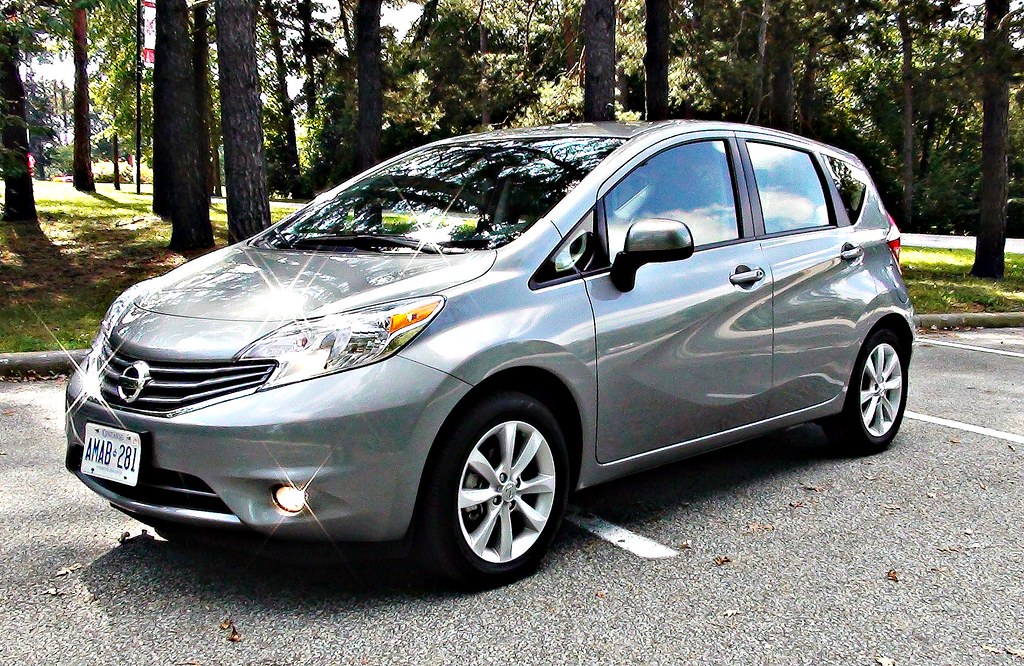
9. **Nissan Versa Note**For buyers seeking an affordable, small hatchback, the Nissan Versa Note might initially seem like an attractive option. However, its low purchase price often belies a corresponding level of quality that frequently frustrates owners in the long run. The vehicle’s compromises on durability and performance are a common theme among those who regret their purchase.
Much like other Nissan models of its era, the Versa Note is equipped with a continuously variable transmission (CVT) that has proven to be a consistent source of dissatisfaction. Owners often report that this transmission contributes to an uninspiring driving experience, characterized by a droning engine note and a disconnected feel. The long-term reliability of these CVTs has also been questioned, leading to costly repairs for many.
Adding to the powertrain concerns is the Versa Note’s 1.6-liter 4-cylinder engine, which many owners describe as providing “anemic acceleration.” This lack of power can make merging onto highways or performing overtakes a challenging and stressful affair, further diminishing the overall driving enjoyment. When combined with the problematic CVT, the engine’s performance often leaves owners feeling that the low initial cost came at too high a price in terms of driving satisfaction and reliability.
Car Model Information: 2019 Cadillac Escalade Platinum
Categories: All set index articles, Articles with short description, CS1 Mexican Spanish-language sources (es-mx), CS1 Portuguese-language sources (pt), CS1 Spanish-language sources (es)
Summary: Nissan Versa is an automobile nameplate used by the Japanese manufacturer Nissan in the Americas for the following models:
According to a Nissan press release in 2008, “versa” is short for “versatile space” meant to imply the spaciousness of the interior and configurable cargo arrangements. The Versa is one of the few remaining subcompact cars left on sale in the North American market, with most automakers dropping small cars from their lineups to focus on crossovers and SUVs.
Get more information about: Nissan Versa
Buying a high-performing used car >>>
Brand: Nissan Model: Versa Note
Price: $37,811 Mileage: 84,091 mi.
Read more about: 12 Cars That Made Drivers Say ‘Nope, Not Again!’ – Your Ultimate Guide to Avoiding Instant Regret on Wheels
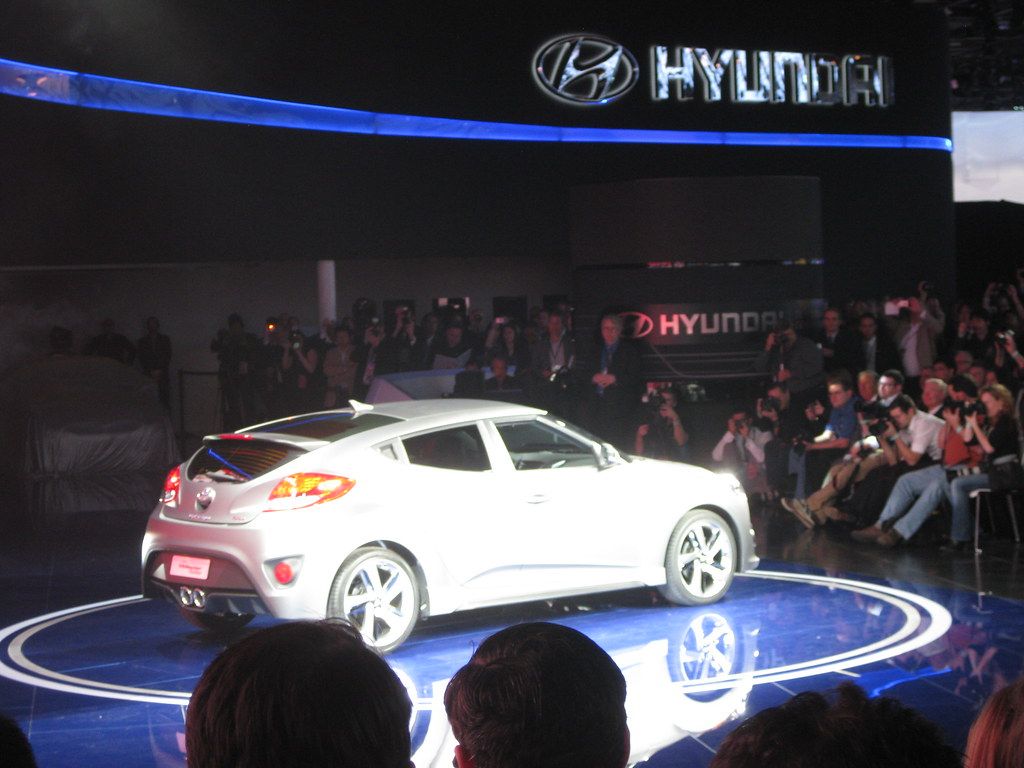
10. **Hyundai Veloster**The Hyundai Veloster stands out with its distinctive styling, unique three-door configuration, and reputation for responsive handling, making it an appealing choice for those seeking something different. Yet, beneath its cool exterior and engaging dynamics lie a host of problems that have been difficult for many owners to overlook, leading to significant regret.
Among the most serious concerns for Veloster owners are persistent engine issues, which can, in some unfortunate cases, lead to catastrophic failure. Such a severe problem naturally erodes confidence in the vehicle’s long-term reliability and can result in incredibly expensive, unexpected repairs. This kind of fundamental mechanical flaw turns what should be an exciting driving experience into a source of constant worry.
Furthermore, the Veloster’s dual-clutch transmission has also been cited as a consistent problem area. Owners frequently report experiencing delayed acceleration, slipping gears, and jerky shifts, which detract from both the performance and the refinement of the vehicle. These transmission glitches make for a less smooth and predictable ride, directly impacting the driving pleasure that the car’s sporty image promises.
As if the engine and transmission issues weren’t enough, the Hyundai Veloster has also been known to suffer from suspension and steering problems. These can manifest as uncomfortable ride quality, premature wear of suspension components, or imprecise steering feel, undermining the vehicle’s otherwise responsive handling characteristics. Cumulatively, these various mechanical woes contribute to a high level of dissatisfaction among owners who wish they had chosen a more reliable and less problematic vehicle.
Car Model Information: 2012 Hyundai Veloster Base
Name: Hyundai Veloster
Manufacturer: Hyundai Motor Company
Production: 2011–2022
Class: Sport compact car
Layout: Front-engine, front-wheel-drive layout
BodyStyle: hatchback
Predecessor: Hyundai Tiburon
ModelYears: 2012–2022
Assembly: Ulsan
Categories: All Wikipedia articles in need of updating, All articles with unsourced statements, Articles containing Korean-language text, Articles with short description, Articles with unsourced statements from May 2018
Summary: The Hyundai Veloster (Korean: 현대 벨로스터, romanized: Hyeondae Belloseuteo) is a compact car first produced in 2011 by Hyundai, with sales beginning in South Korea on March 10, 2011, and in Canada and the United States since the fall of 2011. In South Korea, it was marketed under Hyundai’s ‘Premium Youth Lab’. It was unveiled on January 10, 2011, at the Detroit Auto Show, and fills the void left when Hyundai discontinued the Hyundai Tiburon after the 2008 model year.
The car differs from most other hatchbacks with its asymmetrical door configuration, featuring one large door on the driver side and two smaller doors on the passenger side. This configuration is more common on commercial vehicles and minivans.
Get more information about: Hyundai Veloster
Buying a high-performing used car >>>
Brand: Hyundai Model: Veloster
Price: $7,950 Mileage: 83,462 mi.
Read more about: 12 Cars That Made Drivers Say ‘Nope, Not Again!’ – Your Ultimate Guide to Avoiding Instant Regret on Wheels
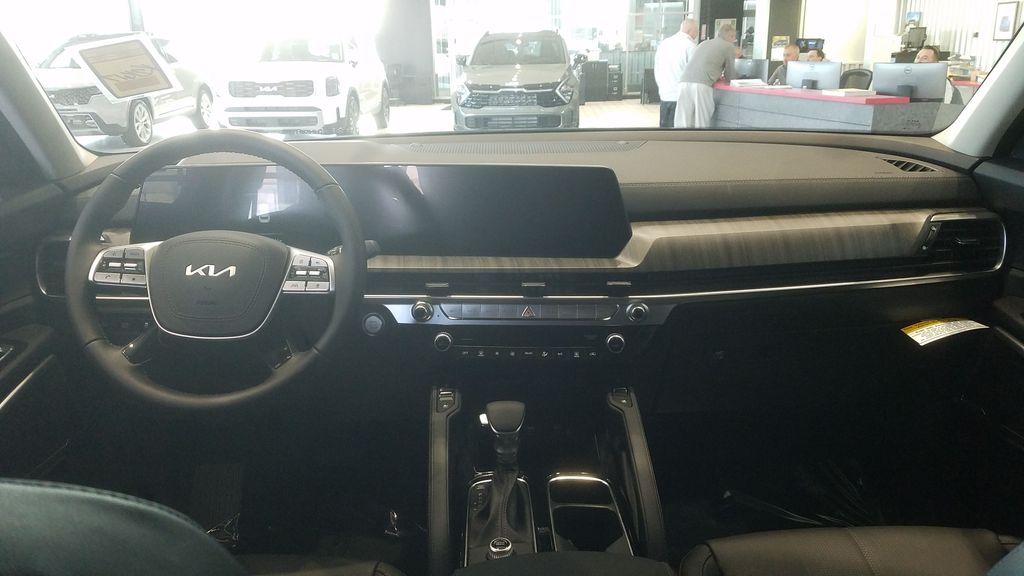
11. **Kia Rio**The Kia Rio, often praised for its affordability and commendable fuel efficiency, has unfortunately also earned a reputation for generating buyer’s remorse among its owners. While it presents an attractive value proposition upfront, the long-term ownership experience often reveals a series of issues that detract significantly from its initial appeal.
One of the most frequently cited problems for the Kia Rio revolves around its engine. Owners report experiencing issues such as rough idling and misfires, which are typically indicative of underlying problems with components like spark plugs or ignition coils. These engine performance issues not only compromise the vehicle’s smoothness and reliability but also lead to unexpected maintenance costs that can quickly diminish the perceived savings from its low purchase price.
Beyond the engine, the Rio also draws criticism for its interior quality and comfort. Many owners complain about the cheap feel of the cabin materials and overall discomfort, especially on longer journeys. While budget vehicles inherently involve some compromises, the perceived lack of quality and comfort in the Kia Rio often falls short of even modest expectations, contributing to a feeling of regret after the initial excitement of a new car fades.
Car Model Information: 2023 Kia Rio S
Name: Kia Rio
Caption: Fourth generation Kia Rio
Manufacturer: Kia
Aka: Kia Pride (2005–2017),Kia K2 (China; 2011–2020)
Production: November 1999 – December 2023
ModelYears: 2001–2023 (North America)
BodyStyle: hatchback
Class: Subcompact car
Layout: Front-engine, front-wheel-drive layout
Predecessor: Kia Pride,Kia Avella
Successor: Kia K3 (BL7)
Categories: 2000s cars, 2010s cars, Articles containing Korean-language text, Articles with short description, CS1 Croatian-language sources (hr)
Summary: The Kia Rio (Korean: 기아 리오) is a subcompact car manufactured by Kia from 1999 to 2023. Body styles have included a three and five-door hatchback and four-door sedan, equipped with inline-four gasoline and diesel engines, and front-wheel drive.
The Rio replaced the first generation Pride—a rebadged version of the Ford Festiva—and the Avella, a subcompact sold as a Ford in some markets. A second generation was introduced in 2005 in Europe and in 2006 in North America, sharing its platform with the Hyundai Accent, a subcompact manufactured by its sister Hyundai Motor Company in South Korea.
In August 2023, the K3 was introduced as its successor in several markets such as Mexico and the GCC countries.
Get more information about: Kia Rio
Buying a high-performing used car >>>
Brand: Kia Model: Rio
Price: $17,218 Mileage: 22,509 mi.
Read more about: 12 Cars That Made Drivers Say ‘Nope, Not Again!’ – Your Ultimate Guide to Avoiding Instant Regret on Wheels
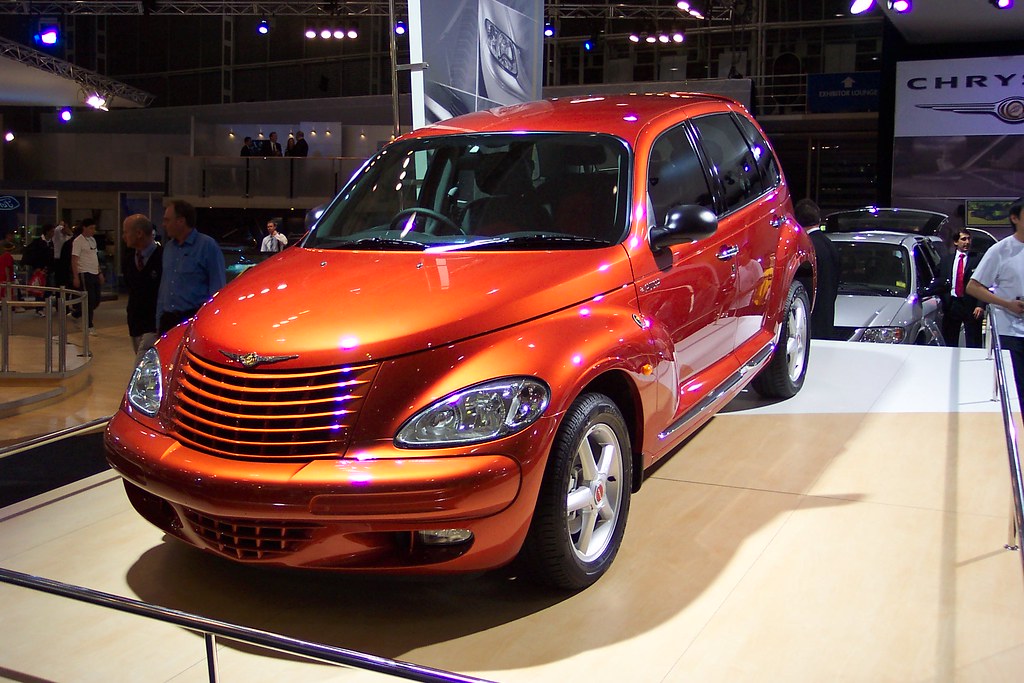
12. **Chrysler PT Cruiser**The Chrysler PT Cruiser occupies a unique space in automotive history with its distinctive retro styling, a design that famously divides opinion. While some found its vintage aesthetic charming, many more grew to “love to hate” its looks—and even more disliked what lay beneath the surface. For owners, the PT Cruiser’s problems extended far beyond mere aesthetics, leading to widespread regret.
The vehicle is notorious for a litany of engine issues that span the gamut of potential mechanical failures. Owners frequently reported problems such as stalling, rough idling, and persistent overheating. Perhaps most critically, head gasket failure was a common and often catastrophic issue, leading to expensive repairs and significant downtime, which understandably left owners questioning their purchase decision.
Adding to the engine woes, the PT Cruiser also suffered from prevalent transmission and electrical problems. Transmission issues could lead to unreliable performance, while electrical glitches often resulted in unpredictable malfunctions of various vehicle systems. These consistent and diverse mechanical and electrical failures created a continuous source of frustration and unexpected costs, cementing the PT Cruiser’s place as a vehicle many owners wished they could “unprocure.”
Car Model Information: 2023 Buick Envision Preferred
Name: Chrysler PT Cruiser
Manufacturer: Chrysler
ModelCode: PT,PG
Production: 2000–2010
ModelYears: 2001–2010
Assembly: Toluca, Mexico State
Designer: Bryan Nesbitt
Class: Compact car
BodyStyle: convertible
Platform: Chrysler PT platform
Related: Dodge SRT4,Dodge Neon
Predecessor: Dodge Neon
Successor: Lancia Delta#Third generation
Layout: Front-engine, front-wheel-drive layout
Engine: ubl
Transmission: Ultradrive#40TE
Wheelbase: 103 in
Abbr: on
Length: 168.8 in
Width: 67.1 in
Height: 63 in
Weight: 3123 lb
Categories: 2010s cars, All articles with unsourced statements, Articles with short description, Articles with unsourced statements from March 2018, Cars discontinued in 2010
Summary: The Chrysler PT Cruiser is a compact car that was built by the American company Chrysler from 2001 until 2010. Introduced as a five-door hatchback wagon, a two-door convertible variant was also made from 2005 until 2008.
Originally planned as a Plymouth model, the PT Cruiser was ultimately marketed as a Chrysler when Plymouth was discontinued. Intended to invoke 1930s aesthetics, the exterior of the PT Cruiser was designed by Bryan Nesbitt. The model received an intermediate facelift for the 2006 model year. Interior packaging was noted for its high roof, high h-point seating, and flexible cargo and passenger configurations enabled by a multi-level rear cargo shelf and rear seats a user could fold, tumble, or remove.
The PT Cruiser was produced in Mexico and Austria at the Toluca Car Assembly and Eurostar Automobilwerk factories respectively. By the end of production in July 2010, worldwide production had reached 1.35 million.
In its nameplate, PT stands for “Personal Transport” or “Personal Transportation”. PT was the PT Cruiser’s product code for the Mexican-made units.
Get more information about: Chrysler PT Cruiser
Buying a high-performing used car >>>
Brand: Chrysler Model: PT Cruiser
Price: $20,221 Mileage: 46,554 mi.
Read more about: 12 Cars That Made Drivers Say ‘Nope, Not Again!’ – Your Ultimate Guide to Avoiding Instant Regret on Wheels
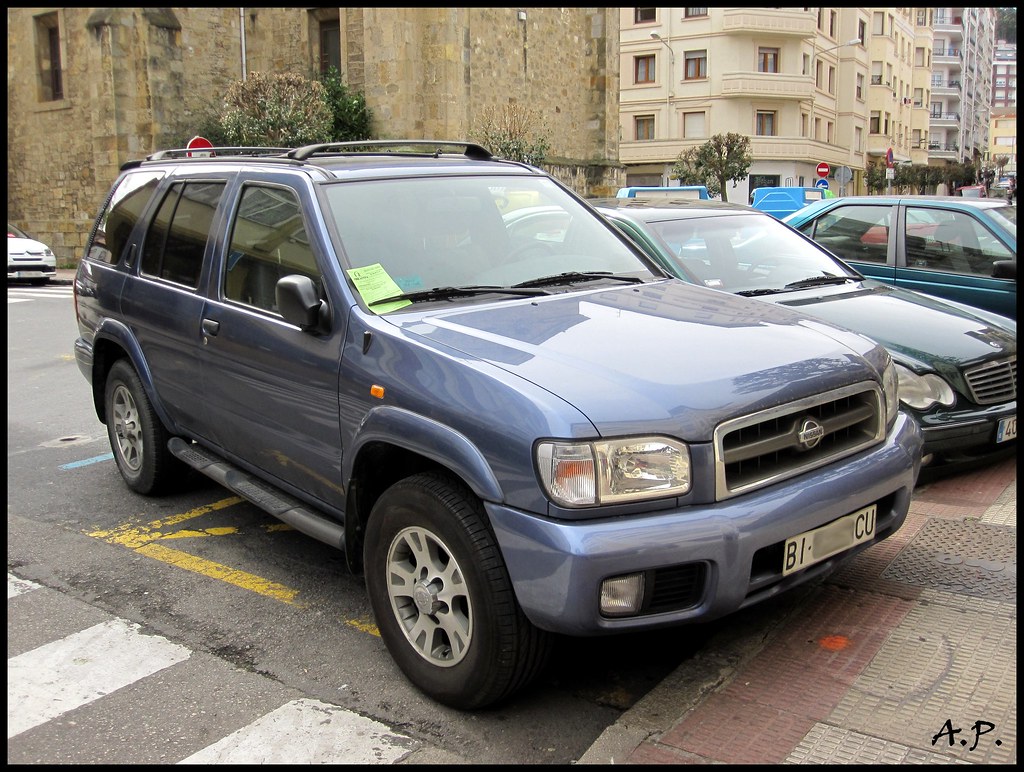
13. **Nissan Pathfinder**Despite its popularity as an SUV, the Nissan Pathfinder has a well-documented history of problems that have caused many owners to deeply regret their buying decisions. What begins as a quest for a reliable family hauler often devolves into a struggle with recurring mechanical issues, undermining the vehicle’s reputation for dependability.
A primary source of contention for Pathfinder owners is, once again, the continuously variable transmission (CVT). This transmission type has proven notoriously problematic across several Nissan models, and the Pathfinder is no exception. Owners frequently report experiencing rough shifting, unsettling shuddering during acceleration, and even overheating, which can severely impact the vehicle’s performance and longevity.
In numerous instances, these persistent CVT problems have escalated to the point where owners have faced the costly and inconvenient necessity of replacing the entire transmission, a significant financial burden that few anticipate when purchasing an SUV. Beyond the transmission, Pathfinder owners also report a range of engine issues and fuel system problems, further contributing to the vehicle’s reputation for unreliability and the ongoing frustration of its drivers.
Car Model Information: 2023 Nissan Pathfinder SL
Name: Nissan Pathfinder
Caption: 2022 Nissan Pathfinder Platinum 4WD (R53, US)
Manufacturer: Nissan
Production: 1985–present
ModelYears: unbulleted list
Layout: unbulleted list
Class: unbulleted list
Chassis: unbulleted list
Predecessor: unbulleted list
Successor: unbulleted list
Categories: 1990s cars, 2000s cars, 2010s cars, 2020s cars, All-wheel-drive vehicles
Summary: The Nissan Pathfinder is a range of sport utility vehicles manufactured by Nissan since 1985. Until the third-generation model, the Pathfinder is based on Nissan’s compact pickup truck platform which it shares with the Navara/Frontier.
The Pathfinder was marketed as the Nissan Terrano (Japanese: 日産・テラノ, Hepburn: Nissan Terano) outside North America. Beginning in 2004, the vehicles were marketed globally as the Pathfinder.
In 2012, the R52 series Pathfinder was released as a three-row crossover SUV based on the unibody Nissan D platform, moving away from the body-on-frame chassis format. The role of a mid-size body-on-frame SUV in Nissan’s global lineup was passed to the Terra/X-Terra, which was released in 2018 and based on the D23 series Navara.
Get more information about: Nissan Pathfinder
Buying a high-performing used car >>>
Brand: Nissan Model: Pathfinder
Price: $33,900 Mileage: 18,055 mi.
Read more about: 11 SUVs That Promise Adventure But Deliver Owners Immediate Regret
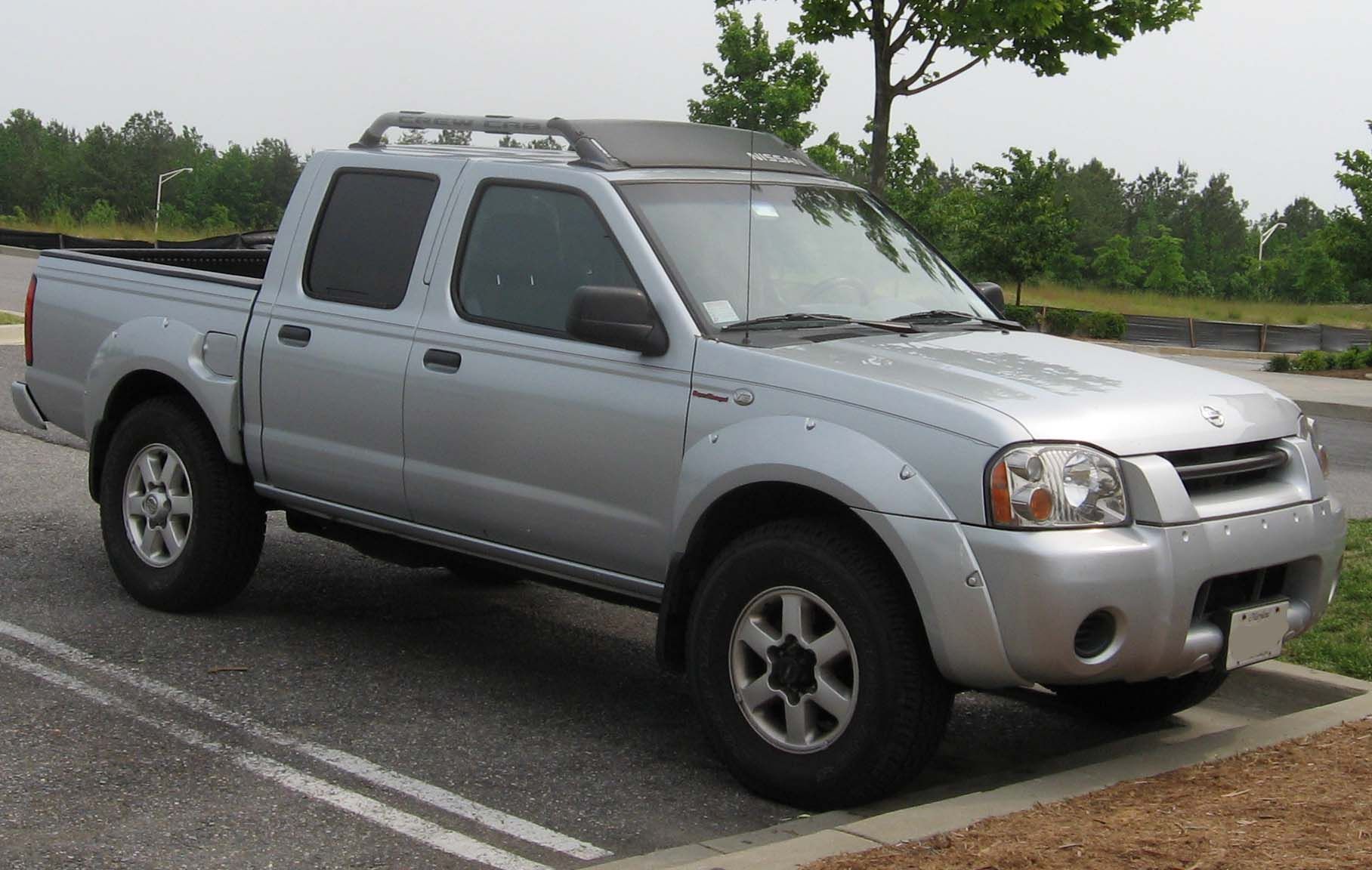
14. **Nissan Frontier**The Nissan Frontier, a mid-size pickup truck, has a dedicated following, but certain model years have unfortunately left a significant number of owners shaking their heads and expressing profound regret. Specifically, the 2005 to 2010 model years are particularly notorious for a critical design flaw that led to widespread transmission failures, becoming a source of major headaches for truck owners.
During this problematic period, the Frontier suffered from a manufacturing defect where the radiator was prone to leaking coolant directly into the transmission fluid. This cross-contamination had catastrophic consequences, leading to a host of transmission issues including slipping gears, herky-jerky shifting, and, ultimately, complete transmission failure. For a vehicle designed for rugged use, such a fundamental flaw was a severe blow to its utility and reliability.
In addition to the pervasive transmission problems, owners of the Nissan Frontier also reported significant issues with the engine and timing chain. These engine-related concerns could lead to expensive repairs and impact the truck’s overall performance and longevity. The combination of these severe mechanical problems often meant that what was intended to be a dependable workhorse turned into a frustrating and costly liability, compelling many owners to wish they had never purchased these particular models.
Car Model Information: 2014 Nissan Frontier S
Categories: All set index articles, Articles with short description, Nissan vehicles, Set index articles on cars, Short description is different from Wikidata
Summary: The Nissan Frontier is a nameplate used on three different pickup truck models by Nissan:
Nissan Frontier (international), an alternative nameplate for the NP300/Navara on some markets
Nissan Frontier (North America), a rebadged NP300/Navara from 1997 to 2021, then became a separate model since 2021
Nissan Frontier Pro, a rebadged Dongfeng Z9 PHEV that will be available from 2025.
Get more information about: Nissan Frontier
Buying a high-performing used car >>>
Brand: Nissan Model: Frontier
Price: $13,435 Mileage: 131,197 mi.
Read more about: 11 SUVs That Promise Adventure But Deliver Owners Immediate Regret
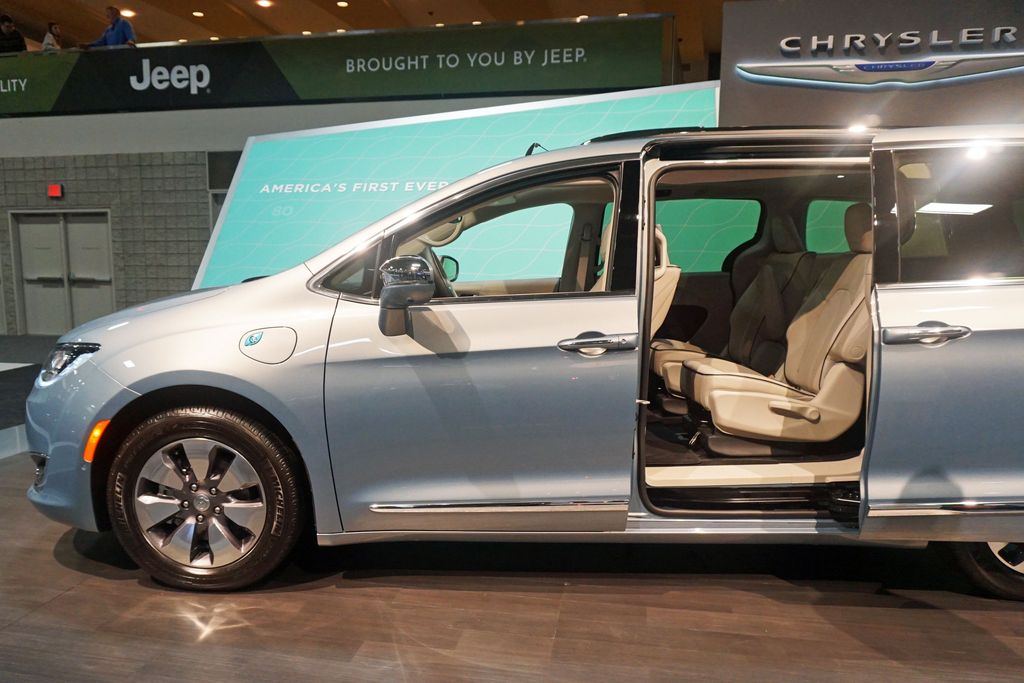
15. **Chrysler Pacifica Hybrid**The Chrysler Pacifica Hybrid minivan aimed to offer a blend of family utility with modern fuel efficiency, leveraging a plug-in hybrid powertrain. While the concept of better fuel economy is undeniably attractive, the execution has unfortunately been riddled with battery and electrical problems, leading many owners to unequivocally answer “No” when asked if the efficiency offsets the persistent issues.
Owners frequently report a range of battery-related issues, including premature battery drain, an inconsistent all-electric range that often falls short of expectations, and, in severe cases, complete battery failure. These problems directly undermine the core promise of a hybrid vehicle – reliable and efficient electric power – and often necessitate inconvenient and costly service visits, eroding confidence in the advanced powertrain technology.
Compounding these battery concerns, the Pacifica Hybrid also experiences problems with its electric continuously variable transmission (eCVT). This sophisticated transmission, integral to the hybrid system, has shown vulnerabilities that can lead to operational glitches and reduced dependability. The cumulative effect of these complex powertrain issues and other electrical system faults often leaves owners feeling that the hybrid technology, while innovative, has not yet achieved the necessary level of reliability for a primary family vehicle, leading to significant regret.
In the journey of car ownership, the road from anticipation to regret can be a surprisingly short one. As we’ve explored with these 15 vehicles, the shine of a new purchase can quickly dull when faced with persistent mechanical issues, design flaws, or unexpected costs. From infamous transmission troubles and engine failures to electrical glitches and subpar interior quality, the reasons for buyer’s remorse are as varied as the vehicles themselves.
Car Model Information: 2023 Buick Envision Preferred
Name: Chrysler Pacifica (RU)
Manufacturer: Chrysler (automotive brand)
Aka: Chrysler Voyager,Chrysler Grand Caravan (Canada, 2021–present)
Production: 2016–present
ModelYears: 2017–present
Assembly: Windsor, Ontario
Designer: Irina Zavatski,Winnie Cheung (interior)
Class: Minivan
BodyStyle: 5-door minivan
Layout: Front-engine, front-wheel drive,Front-engine, all-wheel drive
Platform: Compact U.S. Wide platform
Related: Chrysler 200#Second generation (2014–)
Engine: Chrysler Pentastar engine#3.6L,FCA Global Medium Engine
Motor: 2x electric motors (SiEVT main motor & motor generator; PHEV)
Transmission: ZF 9HP transmission,automatic transmission,Continuously variable transmission
Drivetrain: PHEV
ElectricRange: cvt
Battery: val,lithium-ion battery
Wheelbase: 3089 mm
Abbr: on
Order: flip (hybrid)
Length: 203.6 in
Width: 79.6 in
Height: convert
Weight: {{convert,1964,kg,lb,abbr=on,order=flip
Predecessor: Chrysler minivans (RT)
Categories: 2010s cars, All-wheel-drive vehicles, Articles with short description, CS1 Spanish-language sources (es), Cars introduced in 2016
Summary: The Chrysler Pacifica is a minivan produced by the Chrysler division of Stellantis since the 2017 model year. Replacing the Chrysler Town & Country, the Pacifica is the sixth generation of Chrysler minivans, taking its name from the 2004–2008 product line. Along with serving as the first minivan with a plug-in hybrid drivetrain, the Pacifica has also served as a platform for autonomous vehicle development.
For the 2020 model year, Chrysler repackaged the lower-trim versions of the Pacifica as a revived Chrysler Voyager, largely to expand fleet sales of the model line; following the retirement of the Dodge Grand Caravan, the Chrysler Voyager was introduced in Canada for 2021 as the Chrysler Grand Caravan (moving the nameplate from Dodge to Chrysler after 36 years). Following the retirement of the Chrysler 300 sedan, the Pacifica/Voyager/Grand Caravan is currently the only vehicle marketed by Chrysler.
Chrysler has assembled the Pacifica minivan (and the Voyager/Grand Caravan) in its Windsor Assembly facility in Ontario (home to Chrysler minivan assembly since 1983).
Get more information about: Chrysler Pacifica (minivan)
Buying a high-performing used car >>>
Brand: Chrysler Model: Pacifica Hybrid
Price: $20,221 Mileage: 46,554 mi.
Read more about: 12 Cars That Made Drivers Say ‘Nope, Not Again!’ – Your Ultimate Guide to Avoiding Instant Regret on Wheels
These stories serve as powerful reminders that a vehicle is far more than its initial aesthetics or advertised specifications. It’s an investment in your daily life, and its true value is measured in long-term reliability, driving satisfaction, and the absence of unforeseen headaches. Savvy car buyers understand that delving into owner reviews, reliability ratings, and common complaints is not just due diligence—it’s an essential safeguard against the painful sting of regret. Ultimately, making an informed choice means understanding not just what a car promises, but what it truly delivers, mile after challenging mile.



